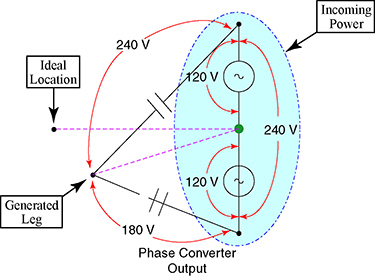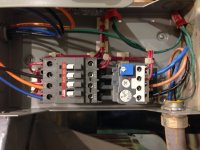phmade
Member
- Joined
- Oct 18, 2010
- Messages
- 162
I recently upgraded some equipment in the shop and now I'm troubleshooting an issue. I have a 7.5HP 3 phase dust collector (Nederman) that continues to trip a breaker on the 3 phase panel. The nameplate on the motor states a max draw of 21Amps so I put in a 30A breaker and #10 wire. I should also mention that I'm using a rotary phase converter to generate my 3rd phase.
When I turn on the dust collector, the motor starts and turns but before it reaches full RPM, the breaker trips on my 3 phase panel. I have very little experience with 3 phase power and I'm really stumped.
I did swap out circuit breakers with another 30A breaker (in the event that I may just have a bad breaker) but that did not resolve the problem. Does anyone have any recommendations?
When I turn on the dust collector, the motor starts and turns but before it reaches full RPM, the breaker trips on my 3 phase panel. I have very little experience with 3 phase power and I'm really stumped.
I did swap out circuit breakers with another 30A breaker (in the event that I may just have a bad breaker) but that did not resolve the problem. Does anyone have any recommendations?


